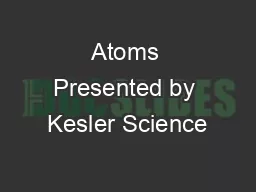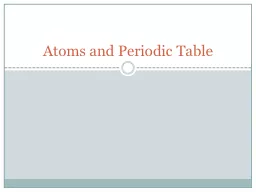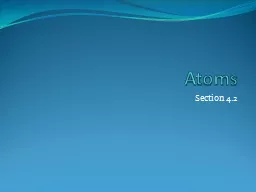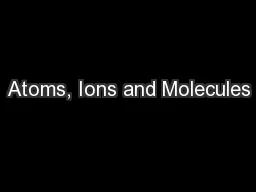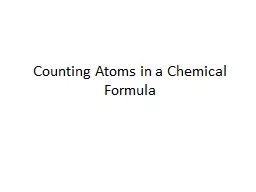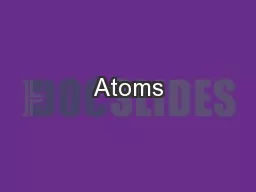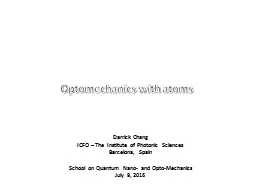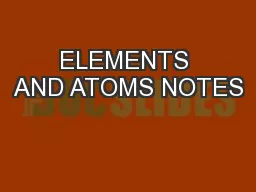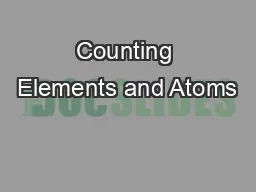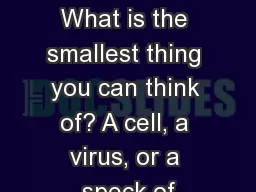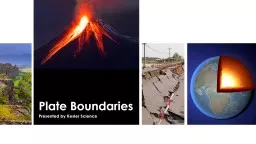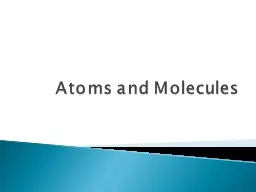PPT-Atoms Presented by Kesler Science
Author : tawny-fly | Published Date : 2018-03-06
Essential Questions What is the basic structure of atoms How is an atoms mass calculated Which subatomic particles are electrically charged Essential Questions
Presentation Embed Code
Download Presentation
Download Presentation The PPT/PDF document "Atoms Presented by Kesler Science" is the property of its rightful owner. Permission is granted to download and print the materials on this website for personal, non-commercial use only, and to display it on your personal computer provided you do not modify the materials and that you retain all copyright notices contained in the materials. By downloading content from our website, you accept the terms of this agreement.
Atoms Presented by Kesler Science: Transcript
Download Rules Of Document
"Atoms Presented by Kesler Science"The content belongs to its owner. You may download and print it for personal use, without modification, and keep all copyright notices. By downloading, you agree to these terms.
Related Documents

